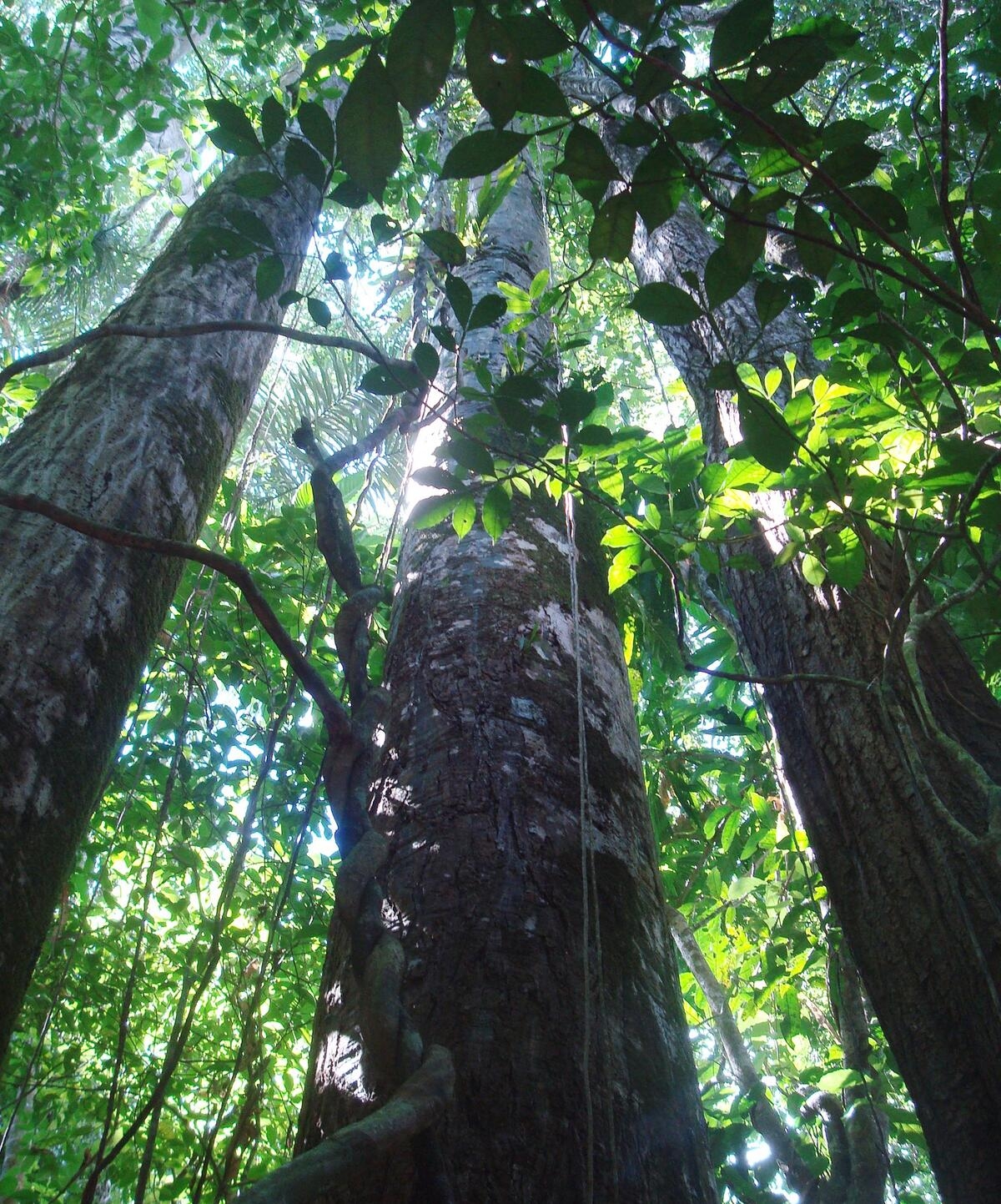We reach more than 65,000 registered users in Dec!! Register Now

In the tropics, nitrogen-fixing trees take a hit from herbivores
- December 09, 2022
- 31 Views
- 0 Likes
- 0 Comment
Selective feeding by insects and other animals reduces nitrogen, limits forest growth.
The ability of tropical forests to grow and store carbon is limited, in part, by herbivory. Insects and other animals prefer to feed on nitrogen-fixing trees, reducing the success of fixers and the nitrogen they provide. So reports a new paper out this week in the journal Nature, which recommends accounting for herbivory constraints on nitrogen-fixing trees in climate models and projections of the tropical forest carbon sink.
By partnering with soil microbes, nitrogen-fixing trees turn atmospheric nitrogen gas into a form of nitrogen that is available to plants. When fixers shed their leaves, they enrich soils with nitrogen, benefitting nearby plants. In nitrogen-poor tropical forests, nitrogen-fixing trees are the main source of new nitrogen to soils. Yet they are also rare.
With colleagues, Batterman set out to reveal if the diets of insects and other herbivores were a constraint. Their three part study looked at: (1) whether nitrogen-fixing trees experienced more herbivory than non-fixers, (2) the carbon cost of herbivory, and (3) if herbivory was due to herbivore preference for nitrogen-rich leaves.
Carbon costs of herbivory were determined by looking at the costs of rebuilding lost leaf tissue, and how leaf damage reduced carbon assimilation via photosynthesis. Leaf traits were also collected across species, and included: nutrient concentrations, physical defenses, leaf toughness, and chemical similarity.
Overall, fixers experienced 26% more herbivory than non-fixers. Their leaves were attacked 21% more than non-fixers, consistent with them being preferentially targeted by insects and other animals. Fixer seedlings had a higher proportion of leaf area lost than non-fixers, but this number was smaller than expected, indicating that fixers have evolved defense strategies to prevent herbivores from consuming large areas of their leaves.
Fixers also experience 34% greater carbon opportunity costs due to herbivory than non-fixers, exceeding the metabolic cost of fixing nitrogen. Unexpectedly, high herbivory for fixers was not found to be driven by high leaf nitrogen. The authors note that the only trait that consistently explained all measures of herbivory was the fixation trait itself – which explained up to 24% of variation – suggesting the high herbivory and the trait of fixation are directly linked evolutionarily.
Lead author Will Barker from the University of Leeds explains, “Our findings suggest that nitrogen-fixers bear higher herbivory costs than non-fixers, and that herbivory may be substantial enough to limit the success of nitrogen-fixing trees and their ability to alleviate nitrogen deficits in tropical soils. This has management implications for the species mixes used in reforestation efforts.”
Batterman concludes, “Mature and recovering tropical forests are a large and important carbon sink, yet this sink is weakening due to climate change and potential limitation by nitrogen. The widespread cost of herbivory for nitrogen-fixers should be incorporated in climate change models as a constraint on symbiotic nitrogen fixation and future tropical forest growth.”
Funding for this research was provided in part by the UK Natural Environment Research Council (NE/M019497/1, NE/N012542/1), British Council Grant #275556724, the Leverhulme Trust, and the US National Science Foundation (NSF DEB 1464389 to LSC).
List of Referenes
- Will Barker, Liza S. Comita, S. Joseph Wright, Oliver L. Phillips, Brian E. Sedio, Sarah A. Batterman. Widespread herbivory cost in tropical nitrogen-fixing tree species. Nature, 2022; DOI: 10.1038/s41586-022-05502-6
Cite This Article as
No tags found for this post









